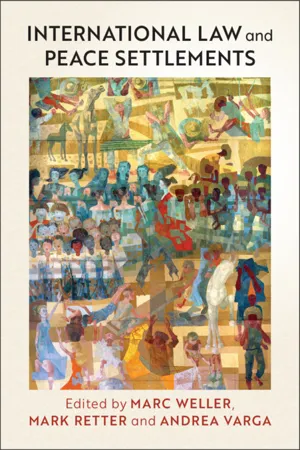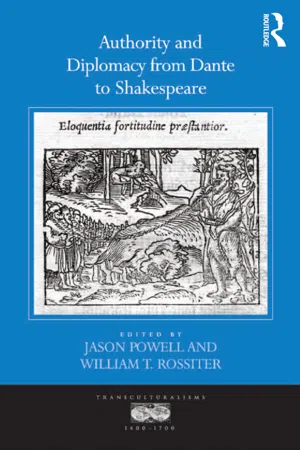History
Treaty of Cateau Cambresis
The Treaty of Cateau-Cambrésis, signed in 1559, marked the end of the Italian Wars. It was a peace treaty between the Habsburg Empire, France, and Spain, and it effectively established the boundaries of their respective territories in Europe. The treaty also brought an end to the long-standing conflict between the Habsburgs and the Valois dynasty in France.
Written by Perlego with AI-assistance
Related key terms
1 of 5
3 Key excerpts on "Treaty of Cateau Cambresis"
- eBook - PDF
- Marc Weller, Mark Retter, Andrea Varga(Authors)
- 2021(Publication Date)
- Cambridge University Press(Publisher)
34 The Peace Treaties of Cateau-Cambre ´sis between France and Spain of 3 April 1559 and between England and France of 2 April 1559 illustrate well why. 35 The major territorial clauses of the Franco-Spanish treaty stipulated the return of all conquered cities and fortresses on the northern front along the border between France and the Spanish Netherlands (Article 12) with the exception of Hesdin (Article 16), the restitution of French conquests to the Prince- Bishopric of Lie `ge (Article 15), the restitution of the Spanish enclave of the Country of Charolais in the French Duchy of Burgundy to Spain (Article 20) and the restitution of all French conquests in Italy to their respective lords. This concerned chiefly the lands of the House of Savoy. Of the Savoyard lands, France would temporarily continue to occupy some fortified towns as a guarantee for the settlement of outstanding financial claims and disputes between the houses of France and Savoy (Articles 23–5 and 35). The Franco-English peace treaty confirmed France’s possession of Calais, which France had conquered during the war, for a period of eight years after which it would return the territory to England against the guarantee of a bond of 500,000 e ´cus (Articles 1–4). These results were reached after years-long negotiations, which had been largely waged in terms of pre-existing claims and rights rather than under the invocation of the right of 32 Kalevi J. Holsti, Peace and War: Armed Conflicts and International Order 1648–1990 (Cambridge: Cambridge University Press, 1991), 46–63, 87–102 and 138–50. 33 Note that this is a different understanding of uti possidetis from the one used in contemporary international law, see Giuseppe Nesi, ‘Uti possidetis Doctrine’, in: Max Planck Encyclopedia of Public International Law, February 2018, para. 2. 34 E.g. Grotius, De Jure Belli ac Pacis, 3.20.11–12; Wolff, Jus Gentium, 8.991; Vattel, Le droit des gens, 4.2.19. - Jason Powell, William T. Rossiter(Authors)
- 2016(Publication Date)
- Routledge(Publisher)
I focus on a premodern diplomatic practice that, by the time of Westphalia, was degenerating into international scandal: using interdynastic marriages to resolve disputes between rival powers. Few things could be more opposed to Westphalian sovereignty than marriage settlements that imposed a hybrid, or in some cases, a wholly foreign, succession on a territory or population. This pattern went back to antiquity, when marriages among the rulers of Roman successor states reestablished administrative and commercial infrastructures of a waning empire. Instead of focusing on the rise of interdynastic marriage, however, I will examine the first adumbrations of its decline in the 1559 Peace of Cateau-Cambrésis. 4 Historians usually present this treaty as a failure, and even a ‘tragedy’, since France erupted immediately afterwards in civil war. 5 Some historians have argued that the Peace precipitated the war, since French aristocrats, deprived of a foreign enemy, started fighting each other. To be fair, Cateau-Cambrésis achieved its purpose of ending a 50-year conflict between Valois France and Hapsburg Spain over Italy and important cathedral cites in Lorraine. The Spanish-French peace lasted for 30 years, a good run by any measure. Spain used that time to consolidate and expand its transatlantic empire. The peace allowed Elizabeth I to spend the first decades of her reign concentrating on domestic issues like religious settlement and currency reform. 4 I am indebted to much prior work on Cateau-Cambrésis. See Frederic J. Baumgartner, Henry II, King of France, 1547–1559 (Durham, 1988), pp. 218–30; C.S.L. Davies, ‘England and the French War’, in Jennifer Loach and Robert Tittler, eds, The Mid-Tudor Polity, 1540–1560 (London, 1980), pp. 159–85; Susan Doran, England and Europe in the Sixteenth Century (New York, 1999); R.J. Knecht, The Rise and Fall of Renaissance France, 1483–1610, 2nd edn (Oxford, 2001), pp. 230–45; Joycelyne G- eBook - PDF
The Cartographic State
Maps, Territory, and the Origins of Sovereignty
- Jordan Branch(Author)
- 2013(Publication Date)
- Cambridge University Press(Publisher)
The Cartographic State 124 cession of Mâcon, Auxerre, Péronne, Montdidier, Roye, and Bar” as a series of towns, not as delineated spatial areas. 9 In short, the negoti- ations and treaty demonstrate the medieval notion of spatial authority and its complete dissociation from mapping and homogeneous terri- toriality. Furthermore, these negotiations involved more than the mere exchange of towns. With non-territorial forms of authority still strong, the question of homage also arose, with the French king in particular demanding homage from the English monarch. 10 Personal feudal rela- tions, thus, continued to be important to the negotiating parties. Peace of Cateau-Cambrésis, 1559 In 1558–59, France, Spain, and England met to negotiate an end to the Italian wars that had begun at the end of the preceding century. These meetings, which took place at Cercamp and Le Cateau, occurred at the beginning of the early modern growth in the production and use of maps. In spite of sporadic references to maps in the negotiations, however, the forms of authority – both territorial and non-territorial – continued to reflect medieval notions of political control over people and places. In the several treaties that resulted from these meetings, territorial trades and cessions were still noted in the form of lists of towns. For example, Article 11 of the French–Spanish treaty stated: “The King of Spain shall restore to the King of France S. Quentin, Le Catelet and Ham, with their dependencies.” 11 In another example of the continu- ing relevance of medieval ideas of territoriality, negotiations over con- trol of parts of Piedmont included a proposal by the duke of Savoy to receive several towns; “the towns were, however, not to include all the territory surrounding them.” 12 This agreement also illustrates the persistence of non-territorial authorities, as, for example, Section 13 mandated an equal division of revenues from a newly created diocese.
Index pages curate the most relevant extracts from our library of academic textbooks. They’ve been created using an in-house natural language model (NLM), each adding context and meaning to key research topics.


